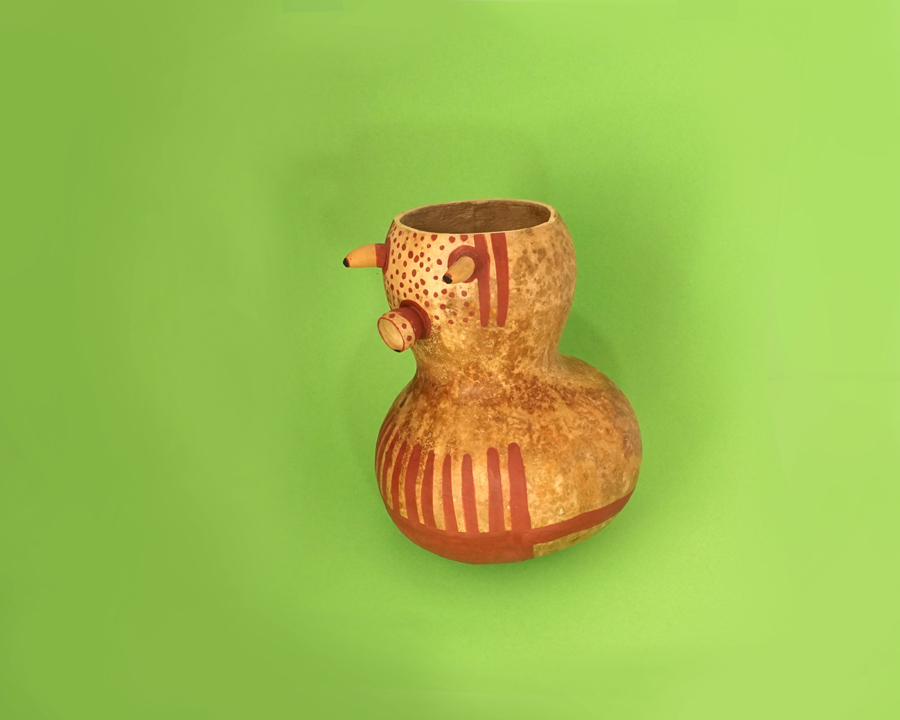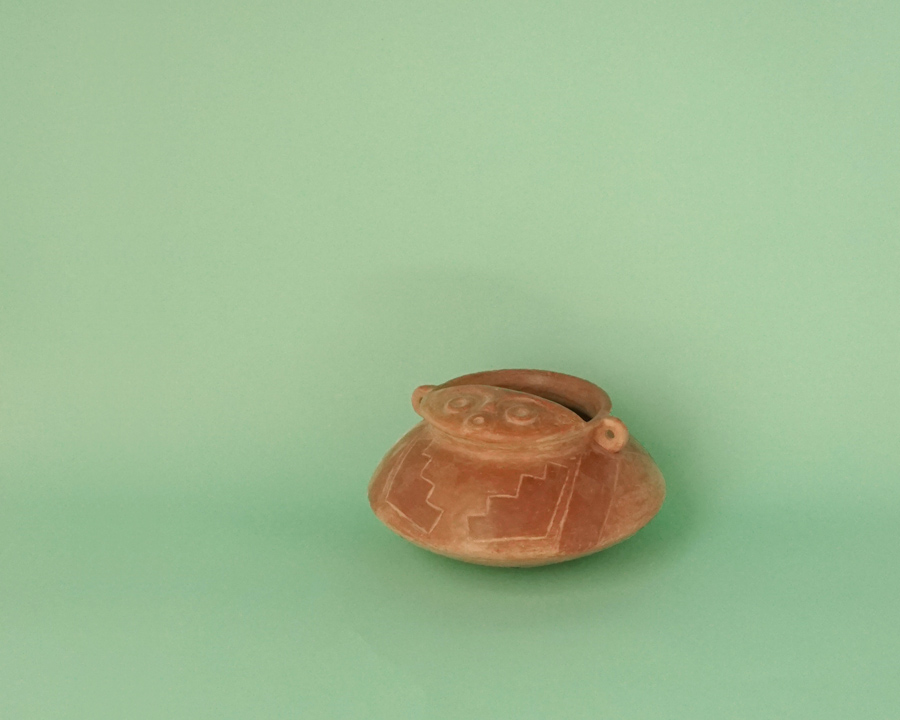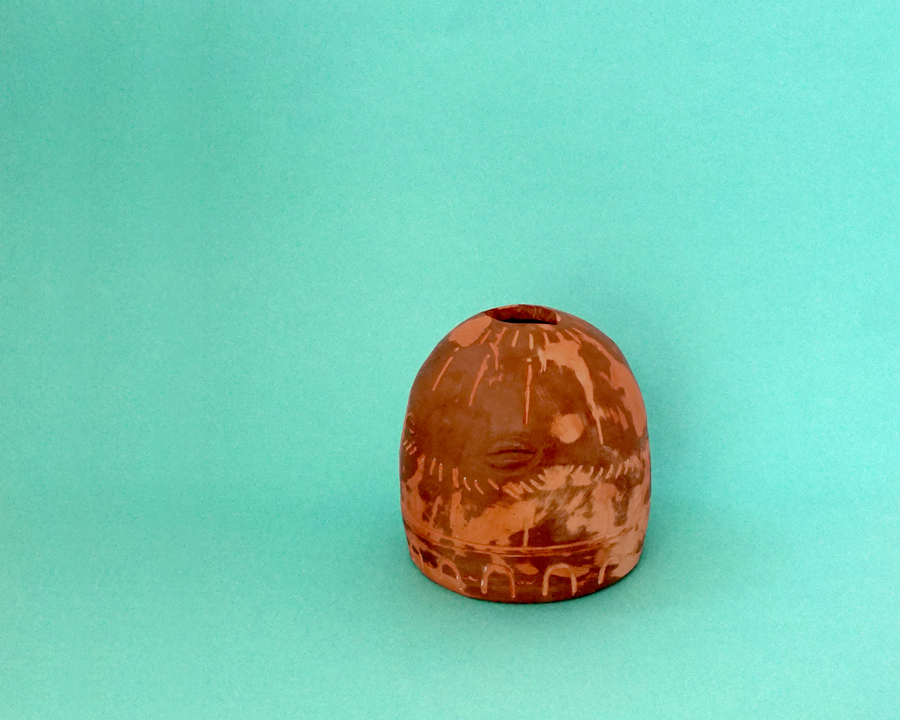Never Spoken Again
MSU Broad Museum
Lansing, Michigan, EU
2020
On a desk of the private study collection of the Museum für Naturkunde in Berlin, an old stuffed parrot guards a vast ornithology collection. An excited young scientist reads a story on the origins of the desiccated animal for the purpose of entertaining a group of visitors: it may have been the last "speaker" of a dead indigenous language from colonial Venezuela, or a German prince’s precious gift to the naturalist Alexander von Humboldt. There is no clear understanding which of these versions, if any, might be true.
Never Spoken Again: Rogue Stories of Science and Collections is a traveling exhibition that reflects on the birth of modern collections, the art institutions that sustain them and their contingent origin stories. Curated by Colombian curator David Ayala-Alfonso, an alumnus of ICI’s Curatorial Intensive, the exhibition is part of ICI’s new series of programs supporting emergent voices in the curatorial field. Considering how institutional collections organize our lives Never Spoken Again brings together artists whose works open up a critique of material culture, iconography, and political ecologies. These practices examine not only the collected objects and the systems of distribution that facilitate their circulation but also the disciplines and subjects of study that they trade in.
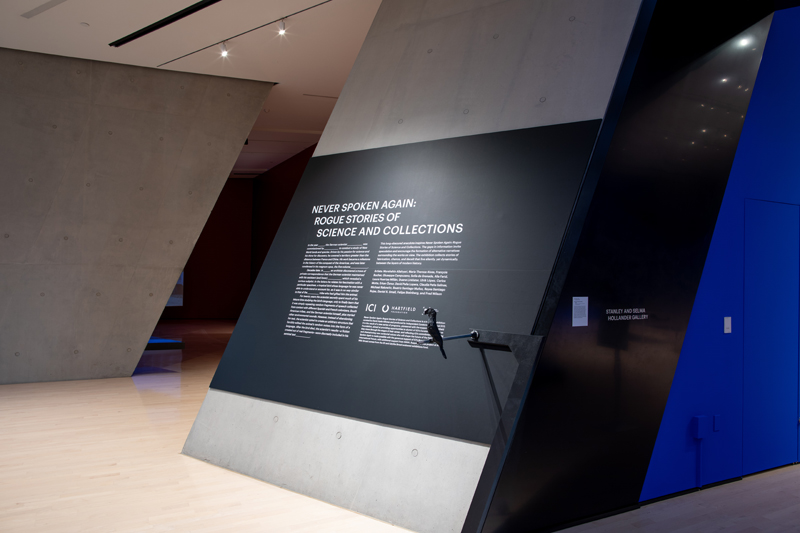
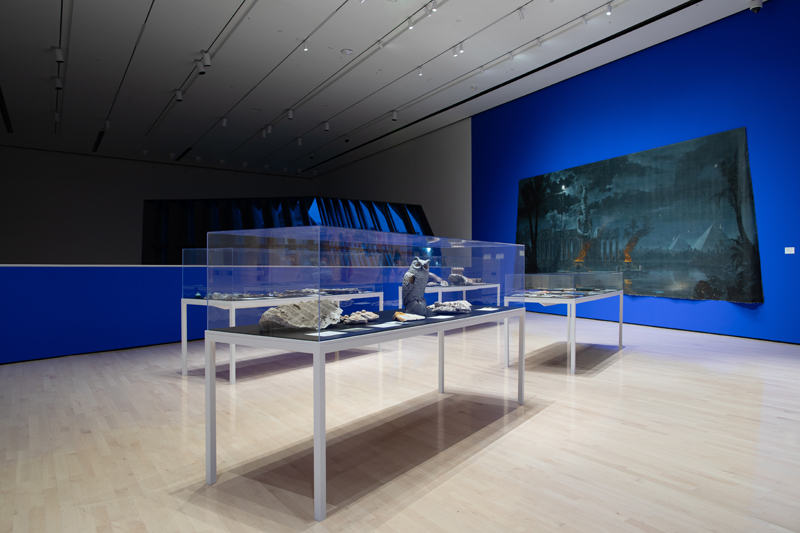

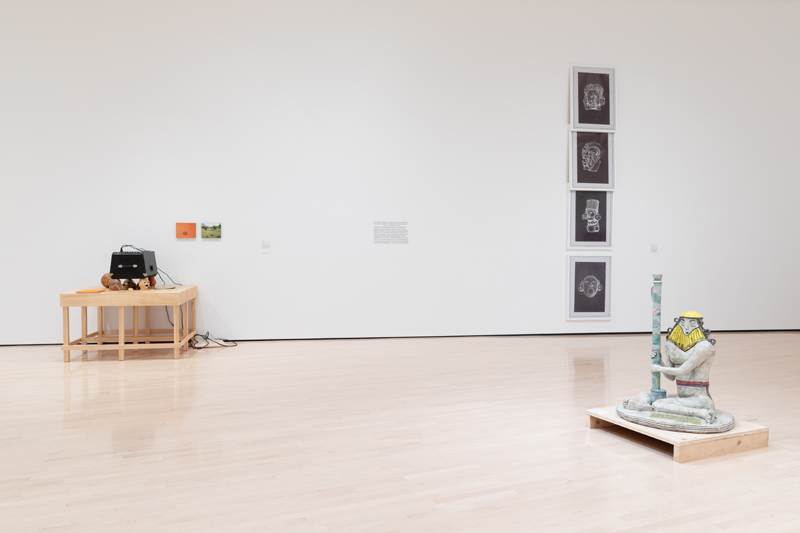
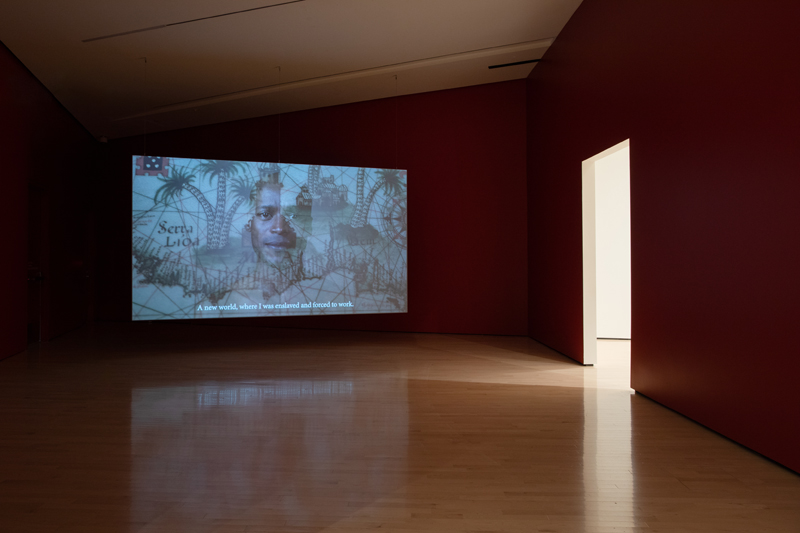

Overview of exhibition
En un escritorio de la colección de estudio privado del Museum für Naturkunde en Berlín, un viejo loro disecado guarda una vasta colección de ornitología. Un científico joven emocionado lee una historia sobre los orígenes del animal disecado con el propósito de entretener a un grupo de visitantes: puede haber sido el último "hablante" de una lengua indígena muerta de la Venezuela colonial, o el preciado regalo de un príncipe alemán a la el naturalista Alexander von Humboldt. No hay una comprensión clara de cuál de estas versiones, si alguna, podría ser cierta. Never Spoken Again: Rogue Stories of Science and Collections es una exposición itinerante que reflexiona sobre el nacimiento de las colecciones modernas, las instituciones de arte que las sustentan y sus historias de origen contingente. Curada por el curador colombiano David Ayala-Alfonso, ex alumno del Curatorial Intensive de ICI, la exposición es parte de la nueva serie de programas de ICI que apoyan las voces emergentes en el campo curatorial. Considerar cómo las colecciones institucionales organizan nuestras vidas Never Spoken Again reúne a artistas cuyas obras abren una crítica de la cultura material, la iconografía y las ecologías políticas. Estas prácticas examinan no solo los objetos recolectados y los sistemas de distribución que facilitan su circulación, sino también las disciplinas y temas de estudio con los que comercian.
Summon Song I imitates a conventional museum installation showing a ctitious archeological site, a publication and a
display mainly composed of Gritones (literally “screamers” in
Spanish), a common motif in Nariño Colombian pre-Hispan-
ic ceramics. This arrangement of objects are then activated
symbolically by a performer, a vocalist, who uses non-verbal
vocal and throat singing to invoke a sense of vividness to
these objects. The objects are both replicas and ctitious arti-
facts that were found in a well-type burial site. The work, after the activation exists as a sculpture. The ob-
jects hold a speaker that reproduces the recording from the
performance, so that the sound is constantly interacting with
the replicas and objects.The publication, is a growing archive of the objects found in
the excavation.
Summon Song I imita una instalación de museo convencional que muestra un sitio arqueológico ficticio, una publicación y una selección compuesta principalmente de Gritones, un motivo prehispánico de cerámica, altamente relacionado con Nariño, Colombia. Esta disposición de objetos se activa luego simbólicamente por un intérprete, un vocalista, que utiliza canto no verbal y de garganta para invocar una sensación de viveza estos objetos. Los objetos son réplicas y vestigios ficticios que aparentan haber sido encontrados en un sitio de entierro tipo pozo.La obra, después de la activación, existe como una escultura. Los objetos sostienen un altavoz que reproduce la grabación del performance, de modo que el sonido constantemente está tocando a las réplicas y objetos. Parte de la instalación es una publicación que opera como un archivo de los objetos encontrados en la excavación.
Summon Song I imita una instalación de museo convencional que muestra un sitio arqueológico ficticio, una publicación y una selección compuesta principalmente de Gritones, un motivo prehispánico de cerámica, altamente relacionado con Nariño, Colombia. Esta disposición de objetos se activa luego simbólicamente por un intérprete, un vocalista, que utiliza canto no verbal y de garganta para invocar una sensación de viveza estos objetos. Los objetos son réplicas y vestigios ficticios que aparentan haber sido encontrados en un sitio de entierro tipo pozo.La obra, después de la activación, existe como una escultura. Los objetos sostienen un altavoz que reproduce la grabación del performance, de modo que el sonido constantemente está tocando a las réplicas y objetos. Parte de la instalación es una publicación que opera como un archivo de los objetos encontrados en la excavación.

Summon song I
Objects replicas, fabricated archeological site, speaker and sound.
Action performed by vocalist for 23 minutes.
2021
Summon song I
Réplicas de objetos, sitio arqueológico fabricado, altavoz y sonido.
Acción realizada por el vocalista durante 23 minutos.
2021
Acción realizada por el vocalista durante 23 minutos.
2021


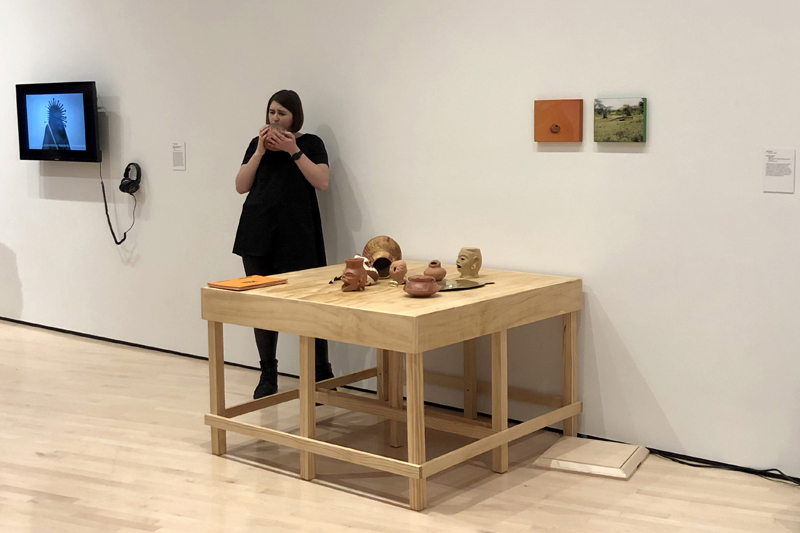
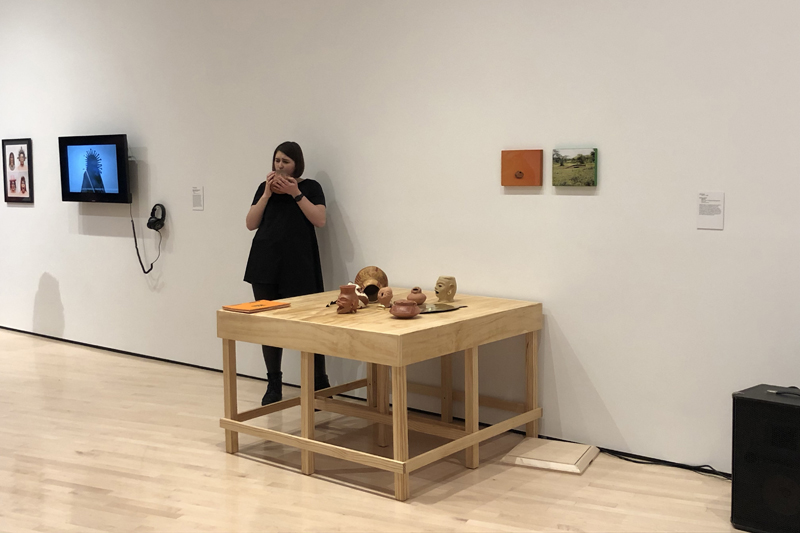
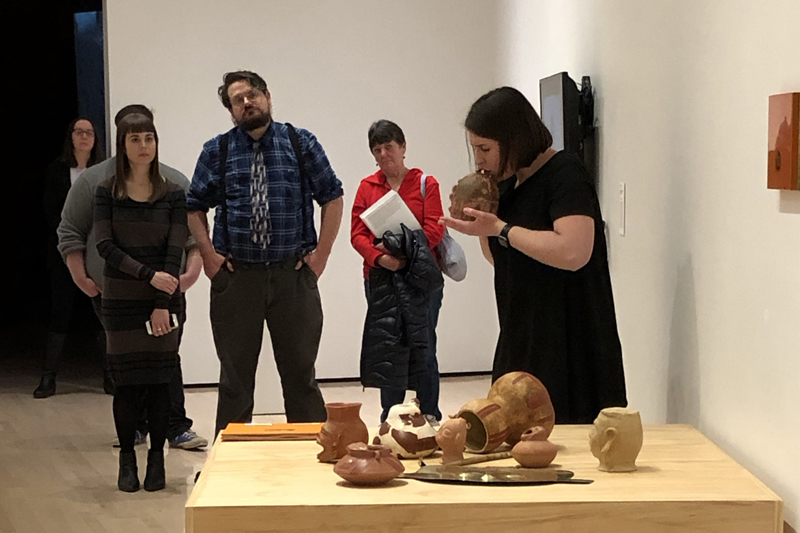

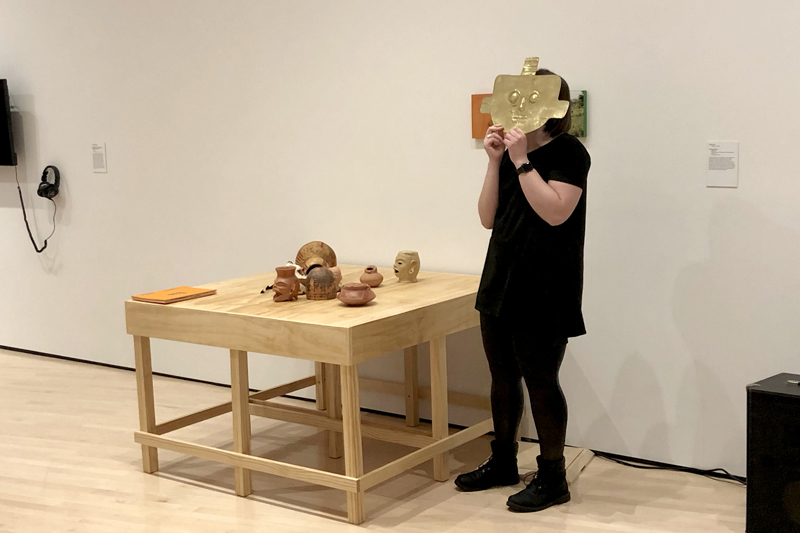
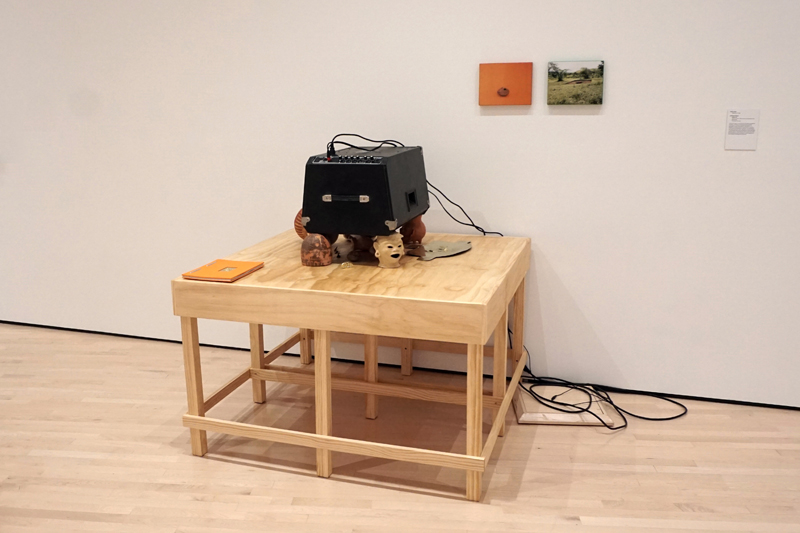

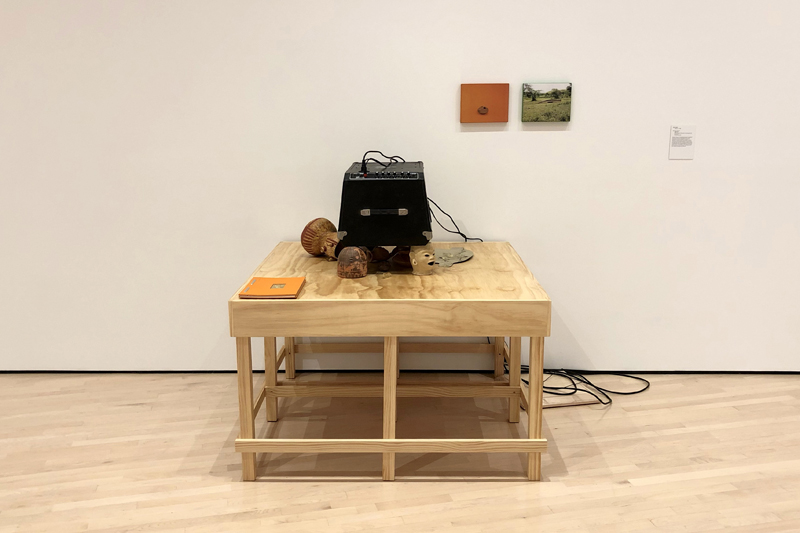

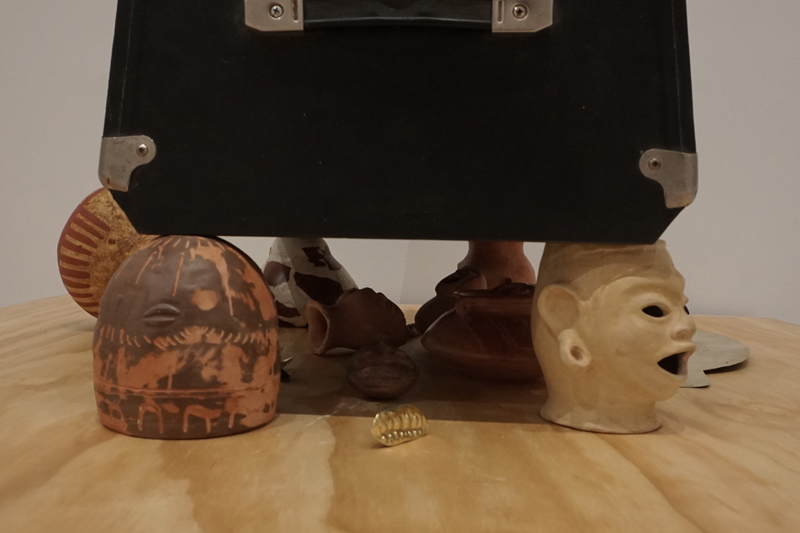
The selection of objects revolves around the Screamers, who are believed to have three plausible usages:
• In the forest each member of a community could be distinguished by his voice, his shout, so screaming was a way to distinguish the soul of each individual.
The work attempts to rethink the role of certain object we as a society have decid- ed to collect, store and in some cases never repatriate them to their original places. From either from cultures that might not exist and some who are still in our present. ¿Can sound, orality, bring them to a differ- ent temporality and presence?
• In the forest each member of a community could be distinguished by his voice, his shout, so screaming was a way to distinguish the soul of each individual.
• Members of some communities were grant- ed an animal as a spiritual guide, and this was manifested through the voice. A way to emu- late the sound of your animal.
• Gritones are characterized by looking to- wards the sky, which in almost all the communities had a connection with the stars and the cosmos, which in great deal shaped their understanding of the world.
The work attempts to rethink the role of certain object we as a society have decid- ed to collect, store and in some cases never repatriate them to their original places. From either from cultures that might not exist and some who are still in our present. ¿Can sound, orality, bring them to a differ- ent temporality and presence?


